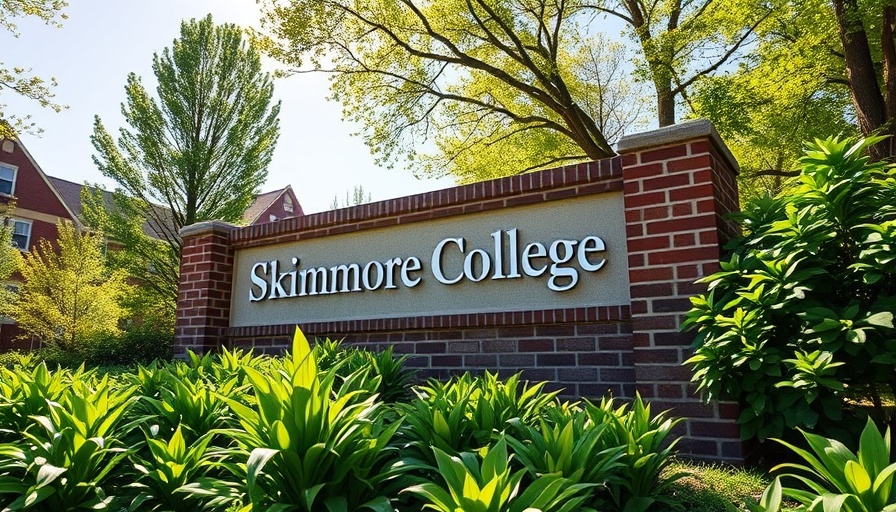
Navigating the New Era of AI in Education
As the new academic year unfolds, Skidmore College is stepping up to the challenge of integrating artificial intelligence (AI) into its educational framework. In a landscape where tools like ChatGPT have swiftly become commonplace in classrooms, educators are tasked with developing policies that encourage responsible use while optimizing learning. This adaptation requires a collaborative approach, as seen in the teaching strategies of new professors like Sam Hawke.
Collaborative Policy Development
In his inaugural statistics class, Professor Hawke plans to incorporate student input into shaping the AI policy. With creativity at the forefront, he will engage students by presenting a question: “Is artificial intelligence appropriate to use in this class?” Using post-it notes, students will brainstorm inquiries they have about AI’s role in their education. This participatory method not only empowers students but also aligns with a growing emphasis on transparency in AI usage. “I want to ensure that accessing AI tools does not replace genuine learning experiences,” Hawke noted, demonstrating a balanced perspective on technology integration.
Establishing Boundaries for Effective Usage
As students express a desire for clear guidelines on AI utilization, American Studies Professor Beck Krefting emphasizes the importance of setting boundaries. The director of Skidmore’s Center for Leadership, Teaching, and Learning believes that providing a structured understanding of AI will reduce the likelihood of misuse. Most students are not malicious in their intentions; however, without guidance, they might inadvertently misuse the technology. Krefting stresses, “Having clear boundaries and a shared understanding will help to prevent the misuse of AI throughout the year.”
Future Implications: Prepping Students for Tomorrow
The rapid advancement of AI technology brings forth critical discussions on its educational impact. Skidmore’s initiatives echo a broader conversation among institutions on harnessing AI positively while guarding against potential pitfalls. By fostering a culture of inquiry and openness, Skidmore College paves the way for students to adapt to the digital landscape effectively. Educational institutions must reflect on their role in preparing students for a future where AI is not just a tool but a partner in learning.
Lessons for the Wider Academic Community
Skidmore’s proactive stance serves as a model for other colleges grappling with AI integration. The approach of incorporating student feedback into policy development not only enhances ownership but also enriches the classroom experience. As similar discussions unfold nationwide, educators are urged to consider how they can balance innovative technologies with the essence of educational integrity.
Encouraging Open Dialogue
An essential aspect of implementing AI in the classroom is nurturing an environment for open dialogue. When students feel comfortable discussing their thoughts and concerns regarding AI, it leads to more informed, ethical usage. This principle can be extended across various disciplines and institutions, reinforcing the idea that education should be a partnership between students and educators.
Conclusion: Joining the Larger Narrative
The conversation around AI in education is far from over. As Skidmore College embarks on this journey, it joins a larger narrative about the responsibilities of academic institutions in the age of digital technology. By prioritizing collaboration and transparency, educational leaders can better prepare their students for a future rich with opportunities presented by AI.
 Add Row
Add Row  Add
Add 




Write A Comment